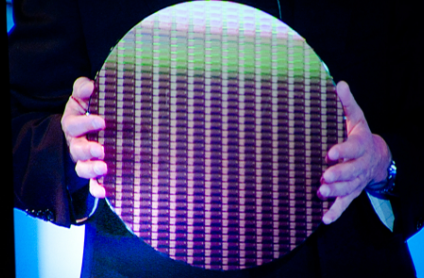- Ameya360 Component Supply Platform >
- Trade news >
- Wafer shipments forecast to set new highs through 2021
Wafer shipments forecast to set new highs through 2021
Total wafer shipments in 2018 year are expected to eclipse the all-time market high set in 2017 and continue to reach record levels through 2021, according to SEMI’s recent semiconductor industry annual silicon shipment forecast. The forecast of demand for silicon units for the period 2018 through 2021 shows polished and epitaxial silicon shipments totaling 12,445 million square inches in 2018; 13,090 million square inches in 2019; 13,440 million square inches in 2020, and 13,778 million square inches in 2021 (see table below).
“As new greenfield fab projects continue to emerge for memory and foundry, silicon shipments are expected to remain strong for 2019 and through 2021,” said Clark Tseng, director of Industry Research & Statistics at SEMI. “Silicon demand will continue to grow as semiconductor content increases in mobile, high-performance computing, automotive, and Internet of Things applications.”
2018 Silicon* Shipment Forecast (MSI = Millions of Square Inches)
Actual |
Forecast |
|||||
2016 |
2017 |
2018 |
2019 |
2020 |
2021 |
|
MSI |
10,577 |
11,617 |
12,445 |
13,090 |
13,440 |
13,778 |
Annual Growth |
3.0% |
9.8% |
7.1% |
5.2% |
2.7% |
2.5% |
*Total Electronic Grade Silicon Slices – Excludes Non-Polished Wafers
*Shipments are for semiconductor applications only and do not include solar applications
Source: SEMI , October 2018
Silicon wafers are the fundamental building material for semiconductors, which in turn, are vital components of virtually all electronics goods, including computers, telecommunications products, and consumer electronics. The highly engineered thin round disks are produced in various diameters (from one inch to 12 inches) and serve as the substrate material on which most semiconductor devices or chips are fabricated.
All data cited in this release is inclusive of polished silicon wafers, including virgin test wafers and epitaxial silicon wafers shipped by the wafer manufacturers to the end-users. Data do not include non-polished or reclaimed wafers.
Online messageinquiry
- Week of hot material
- Material in short supply seckilling
| model | brand | Quote |
|---|---|---|
| MC33074DR2G | onsemi | |
| RB751G-40T2R | ROHM Semiconductor | |
| TL431ACLPR | Texas Instruments | |
| BD71847AMWV-E2 | ROHM Semiconductor | |
| CDZVT2R20B | ROHM Semiconductor |
| model | brand | To snap up |
|---|---|---|
| ESR03EZPJ151 | ROHM Semiconductor | |
| TPS63050YFFR | Texas Instruments | |
| BP3621 | ROHM Semiconductor | |
| BU33JA2MNVX-CTL | ROHM Semiconductor | |
| IPZ40N04S5L4R8ATMA1 | Infineon Technologies | |
| STM32F429IGT6 | STMicroelectronics |
- Week of ranking
- Month ranking
Qr code of ameya360 official account
Identify TWO-DIMENSIONAL code, you can pay attention to


Please enter the verification code in the image below:


























